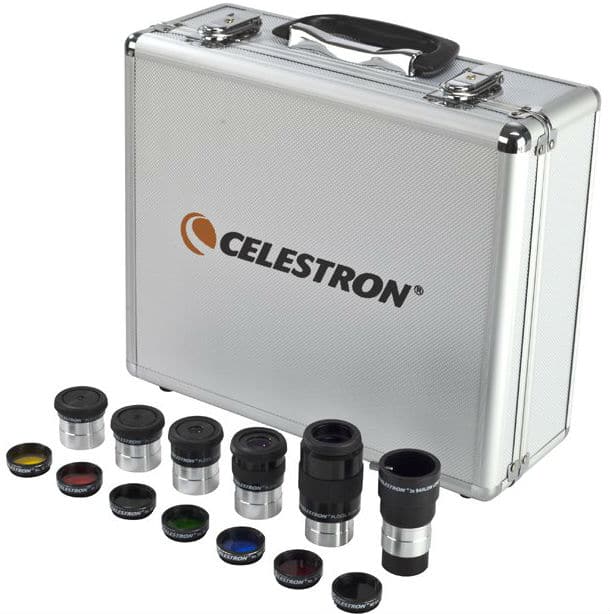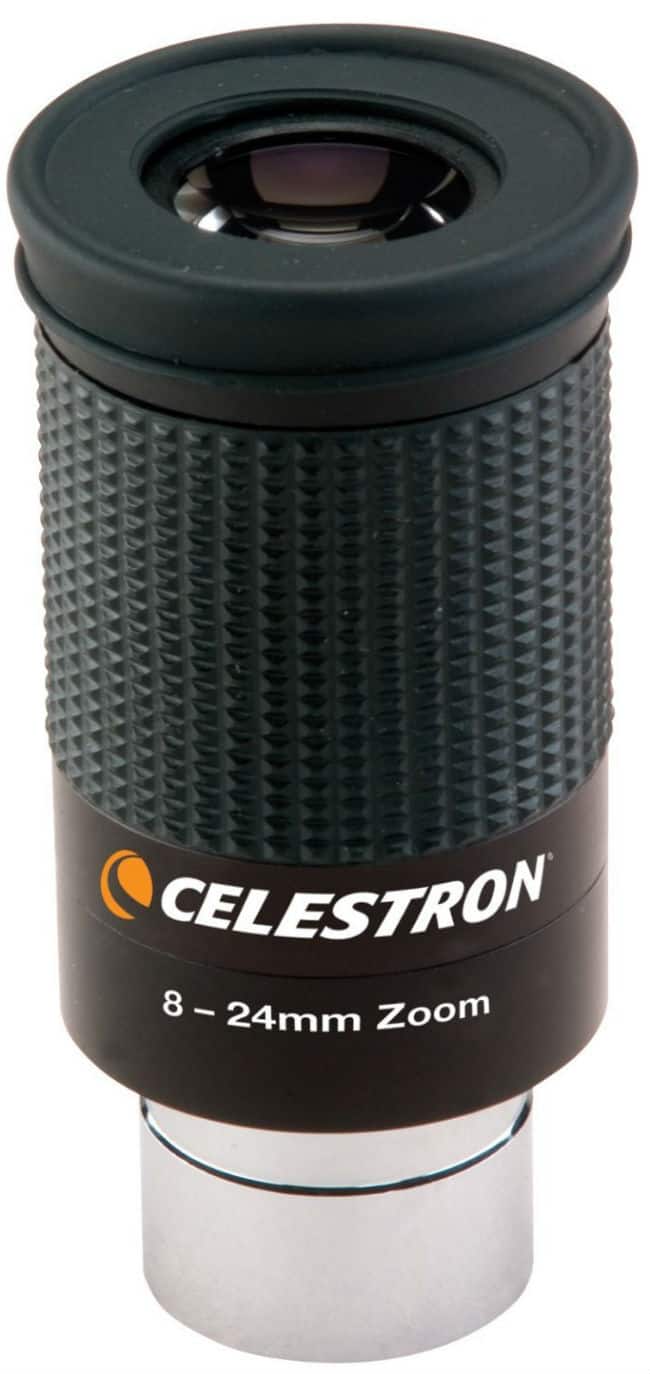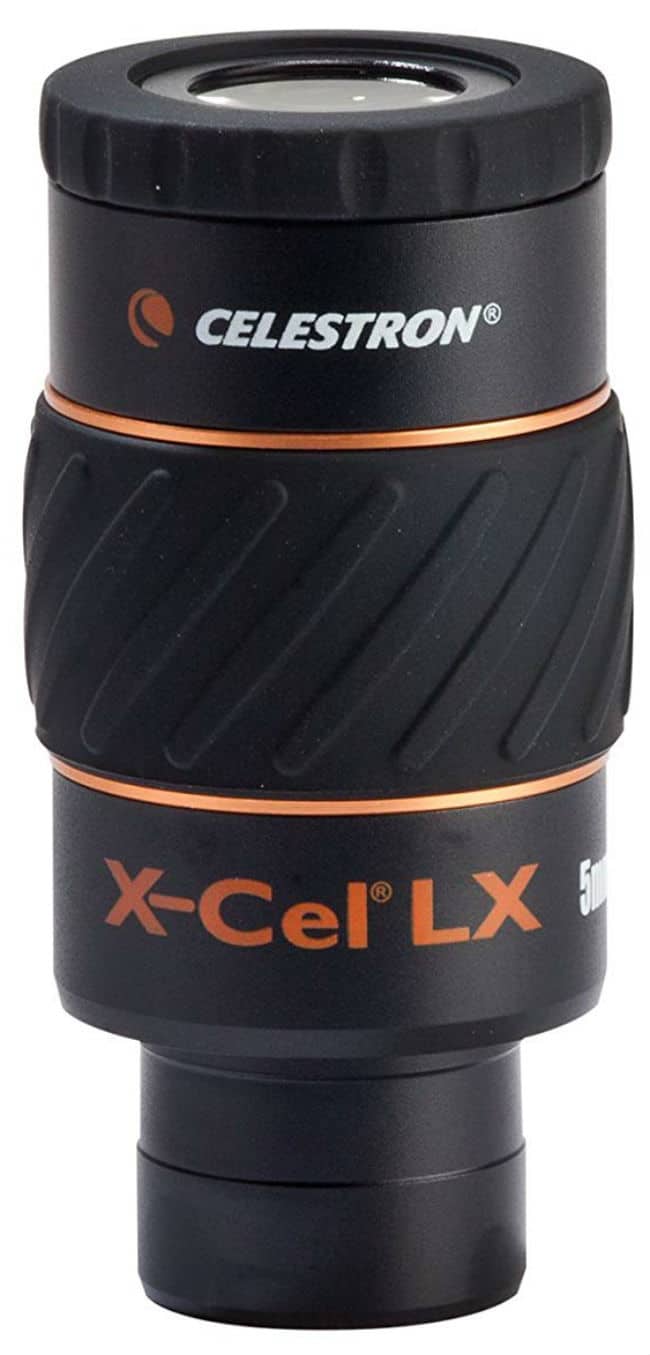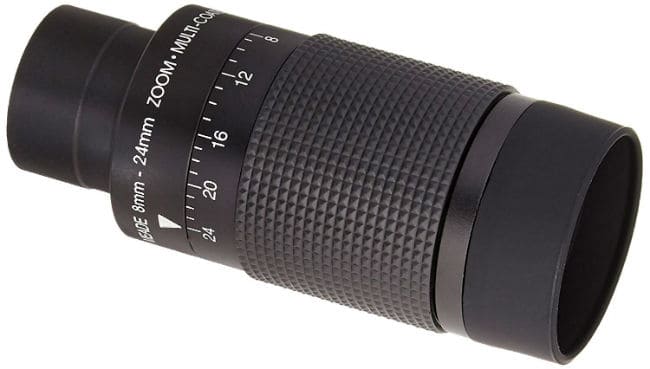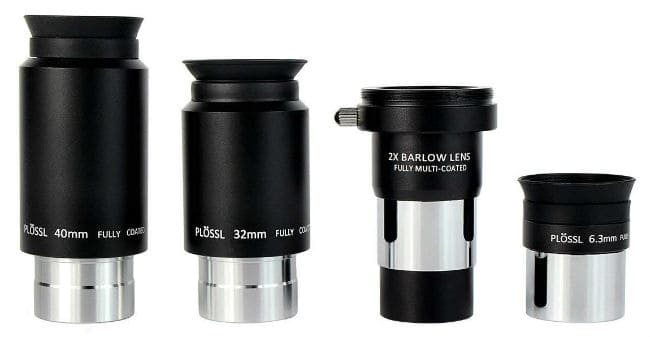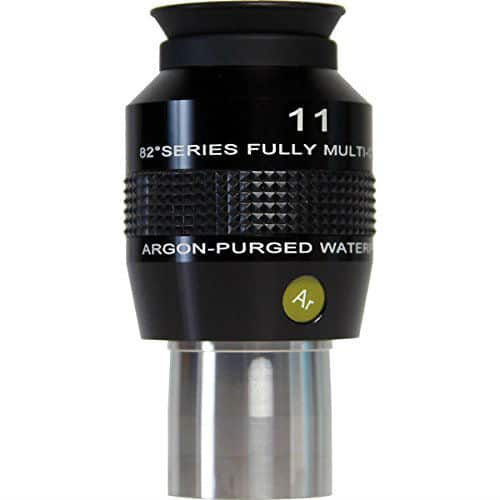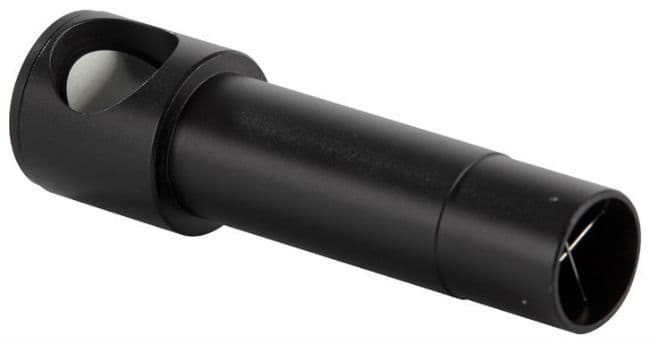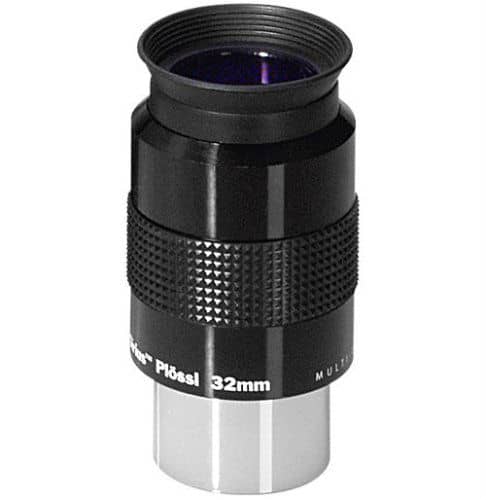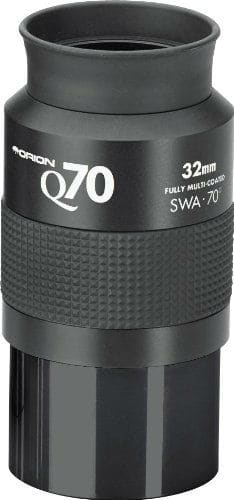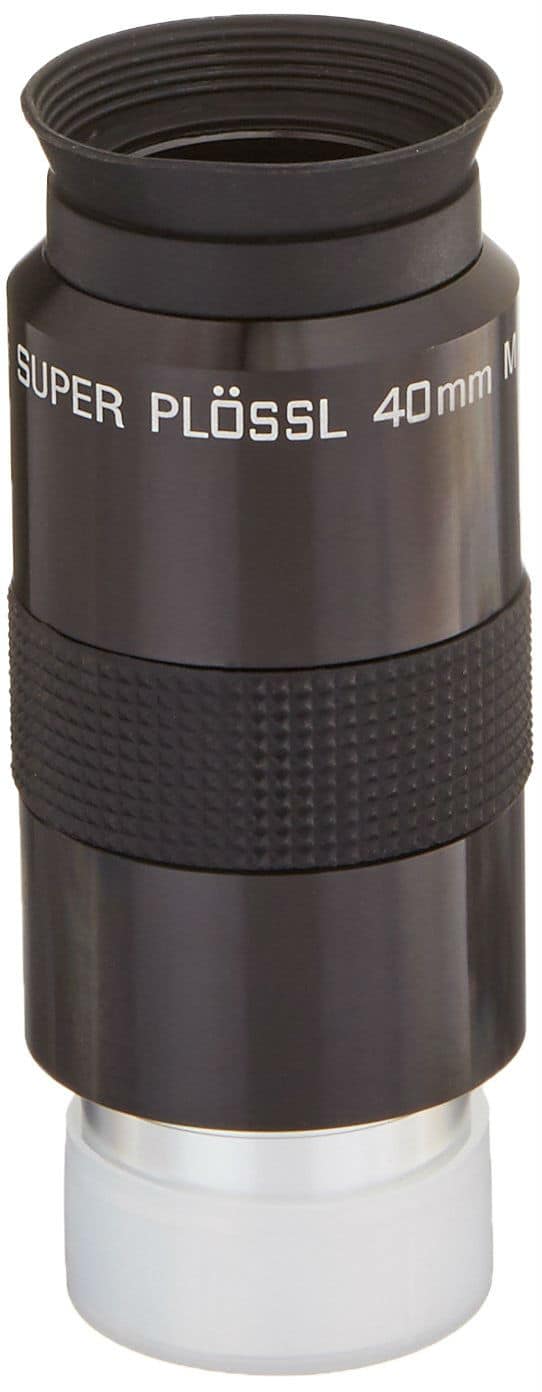Have you ever wondered why your colleagues with less powerful telescopes have better results and more exciting testimonies? Well, it is because they have got a more powerful eyepiece than yours. Do you want a cost-effective upgrade on your space views? You don’t need to buy a new telescope. You only need a better eyepiece to change your game.
Eyepieces are fundamental components of a telescope and each telescope comes with at least one eyepiece. The eyepiece of a telescope defines the magnification power and field of view of that telescope. The magnification power of eyepieces differs from one eyepiece to another based on their focal lengths as well as their field of view.
Finding the best telescope eyepiece in the astronomical market could be an uphill task. You will find yourself in between numerous options, with the marketer persuasion, your budget, and an inexperienced eye for quality and durability. However, this article will save you all the stress and worries. It will guide you through the best eyepieces in the market based on popular reviews. You’ll find everything conversational from the onset of reading to decision making. Let’s get started!
Our Overall #1 Rated Pick
Celestron Telescope Eyepiece and Filter Kit are designed to increase the versatility, functionality, universality, and efficiency of your telescope. This kit encloses five high-grade eyepieces, a Barlow lens, six colored planetary filters, and a moon filter in a safe and organized aluminum metal box.
The five high-grade eyepieces are superior to many in terms of quality and efficiency. They all have a 52-degree, but their magnification power differs accordingly. They are all multi-coated to give you better viewing edge, sharpness, resolution, and color.
10 Best Telescope Eyepieces Comparison
Image | Product Name | Ranking | Price |
|---|---|---|---|
1 4.30 | |||
2 4.50 | |||
3 4.40 | |||
4 4.50 | |||
5 4.90 | |||
6 4.50 | |||
7 4.00 | |||
8 4.80 | |||
9 4.50 | |||
10 4.20 |
10 Best Telescopes Eyepieces Out There
In this section, we review the Top 10 telescopes eyepieces available for amateurs and professions.
Celestron Telescope Eyepiece and Filter Kit are designed to increase the versatility, functionality, universality, and efficiency of your telescope. This kit encloses five high-grade eyepieces, a Barlow lens, six colored planetary filters, and a moon filter in a safe and organized aluminum metal box.
The five high-grade eyepieces are superior to many in terms of quality and efficiency. They all have a 52-degree, but their magnification power differs accordingly. They are all multi-coated to give you better viewing edge, sharpness, resolution, and color.
When you pair any of these eyepieces with the 2X Barlow lens, you will double the magnification power of that eyepiece. The Barlow lens automatically allows you to have 10 different eyepieces in all. It could also be used with any 1.25-Inches fit telescope.
The six colored filters of this that complete this eyepiece kit allows you to get better details from your astronomical tour. The moon filter helps you gain mastery over the appearance of the moon, especially on bright days. The filters could be best described as the game changers in your view.
All these items come in a durable aluminum locker box that keeps each eyepiece and filter dust free and resists harsh weather impacts.
Celestron Telescope Eyepiece and Filter Kit fit the famous adage, “You get what you pay for.” It is easy to use; it offers an excellent viewing experience, and it is affordable, durable, and beautiful.
PROS
CONS
Celestron 93230 Zoom Eyepiece is a hallmark telescopic product. This telescope eyepiece combines multiple eyepieces in one: from 8mm to 24mm. This allows you to switch from one level of magnification to another without changing eyepieces and re-focusing. With this telescopic eyepiece, you only need to focus once and then use the rubber-barrel to multiply your viewing range seamlessly. When you use multiple eyepieces and change them often during your astronomic tours, you lose both scope and flexibility.
Removable eyepieces have fixed focal lengths, and they need to be re-focused each time you set them on your telescope. However, Celestron 93230 Zoom Eyepiece allows you to use numerous focal lengths along with minute differences, and you don’t lose scope when trying to obtain a better magnification.
This zoom eyepiece has premium quality, and it is fully coated to give you a precise, vivid, and crisp view. Some amateurs find single eyepiece to be more evident than the zoom eyepiece. However, they also commend the ease that this eyepiece brings to the astronomic arena, especially when you view the moon at night. You won’t struggle with changing eyepieces. Neither will you have a tray of many eyepieces.
For double magnification, a Barlow lens is used. You can also plug a camera to this eyepiece at the eyecup threads if you intend to take astronomical photographs.
Celestron 93230 Zoom Eyepiece is inexpensive and can be used on any 1.25-inches telescope. It’s an excellent buy for everyone.
PROS
CONS
Celestron X-Cel LX Series Eyepiece is a game-changer in the field of astronomy. Almost every person that has ever used this eyepiece gives credit to the kind of results they got from it. This eyepiece doesn’t come in a set or in a kit. However, it comes in seven different sizes ranging from 4mm to 40mm. This makes it perfect for amateurs who know what size of eyepiece they intend to buy and beginners who may need multiple sizes but can’t afford all at once.
This eyepiece is constructed with six high-grade optical elements that are multi-coated to give more precise and sharper images. It has a large field of view which extends up to 60 degrees. Therefore, it allows you to see better planetary objects with minute details and the moon on brighter days.
It is designed with a 16mm eye relief coupled with an adjustable pop-up eye cup that makes it comfortable and easy to use even during long sessions. The eye relief is par focal: this allows you to change your eyepieces with little or no readjustment. The eyecup can be turned easily irrespective of your height, which makes it perfect for glass wearing astronomers. Also, it has a threaded rubber grip around the center of its barrel, which helps you to have a firm grip when working even in a moist environment.
Celestron X-Cel LX Series Eyepiece is another excellent product from Celestron. It works well for all 1.25-inches telescope, and it is adapted to accept colored and moon filters. This telescope eyepiece is affordable and comes in a protective box that makes it durable.
PROS
CONS
Meade Instrument 1.25-inch Zoom Eyepiece is either the replacement you are looking for or the item to start your astronomy journey. This eyepiece is incredible and is constructed with seven optical elements and features multiple coating that gives planetary and deep sky images a crispy, clear, and sharp look with near-perfect contrast. It provides a low off-axis color, astigmatism, and spherical aberration, which translates into a clearer and detail-oriented viewing experience.
The zoom length of this eyepiece extends from 8mm to 24mm across a field view that extends from 40 degrees (at 8mm) to 55 degrees (at 24mm). The top-notch feature of this zoom feature is that you only need to refocus with each change slightly. However, it is more comfortable and convenient than changing eyepieces every now and then.
This eyepiece has a long eye relief for comfortable star-shooting. It comes with a premium rubber guard alongside a custom-fitted bayonet mount that makes it really suitable for eyeglasses wearers. This rubber guard further prevents eyeglasses from scratch.
Meade Instruments 1.25-Inches Zoom eyepiece is really versatile. It gives you multiple options at an affordable price. At its excellent price, I recommend it for every astronomer irrespective of your level of expertise.
PROS
CONS
Synonym Telescope Eyepiece Set combines simplicity and quality in delivering everything you would expect from a Plossl lens eyepiece. This set includes three eyepieces of 6.3mm, 32mm and 40mm focal lengths and a 2X Barlow lens. These eyepieces are entirely and multilayered coated with a broadband green film that increases image contrast and reduces internal reflections. However, that’s not all. The lens of these eyepieces is darkened at their edges to increase contrast further and eliminates obstructions from scattered lights.
These eyepieces are constructed with four optical elements for a better view of lunar objects star clusters and deep sky objects. The 40mm focal length eyepiece (low power eyepiece) is perfect for observing nebula star clusters while the 32mm focal length eyepiece (medium power eyepiece) can help you see planets, surfaces of the moon and bright star clusters. The 6.3mm focal length eyepiece has the highest magnification. Most amateurs don’t use high power eyepiece. However, they are helpful to beginners, especially in their quest to grasp detail-oriented images.
The Barlow lens is perfect for instant zooming of any image, and it works well with the entire eyepiece. This eyepiece has a wide field of view that extends up to 42 degrees and offers a premium eye relief for long period astronomy.
If you are a glass wearing astronomer, this eyepiece got you covered. It has a soft rubber eye guard that keeps your eyes and glasses safe. The eye guard has a bayonet mount for better convenience a dust cover too. It is fantastic for its price, and it takes your astronomy to another level entirely.
PROS
Explore Scientific 82-Degree Series Telescope Eyepiece brings to the table an unbeatable viewing convenience for all crops of astronomers. This precise eyepiece has a focal length of 11mm, and it is suitable for any telescope which has a 1.25 inches interface.
This telescope eyepiece is also multi-coated to give clear and sharp images with maximum contrast. You don’t need to worry about internal obstructions from scattered lights because the edge of the lens of this eyepiece is also darkened and flat. It is perfect for viewing nebula images, lunar details, planets, and comets.
The striking thing about this eyepiece is its field of view. The field of view extends up to 82 degrees. This offers an unbeatable eye relief that allows you to observe everything you want to see in one gaze. Most users find it perfect for the detail-oriented lunar studies and astronomy. This ultra-wide field of view also allows you to use averted vision skill to view faint objective from parts of the eyes that are more sensitive to light.
It fully waterproof and gas purged. No need to worry about the rainy or humid days. It is gas purged with argon, and oxidative elements like water can’t enter any of its components. It is also par focal, allowing you to change eyepieces easily with little refocusing when you get other eyepieces in the series.
Some persons have complained that the price of this telescope eyepiece is high end. However, truth is told: the astronomic value that could be derived from Explore Scientific 82-Degree Series Telescope Eyepiece, exceed the cost.
PROS
CONS
Celestron Collimation Eyepiece is another excellent product from Celestron that offers superb value for its affordable cost. It is common amongst astronomers to enjoy using reflectors. It is lightweight, and moving from one viewing position to another is straightforward.
This telescope is primarily designed for Newtonian telescopes, which often give blurry images when not precisely collimated. It is straightforward to assemble, set up, and use. Therefore, it is perfect for both beginners and experts. It does not work with any laser beam or batteries.
Celestron Collimation Eyepiece works with the 1.25-inches telescope, and it works perfectly with almost every Newtonian. It gives a clear and undistorted image and can be used for any kind of astronomical imaging. The manufacturer’s manual of this Collimation eyepiece is entirely constructed and written for easy comprehension of how it is to be used. This is because this eyepiece is not as standard as other eyepieces. It is also durable and inexpensive.
PROS
CONS
Orion Sirius Telescope eyepiece is another mind-blowing eyepiece. Any astronomer who uses this eyepiece will quickly recommend it to other astronomers because the results it brings are precisely what any astronomer is looking for.
First, this eyepiece has robust viewing stability. Once you get it focused on your target, it stays there for an extended period without distortion or further adjustments. It is a 32mm focal length eyepiece that is multi-coated for perfect bright, clear and sharp imaging at maximum contrasts levels. The edges of this eyepiece are also blackened. You won’t get anything less than clear and crispy.
Secondly, this eyepiece has something beyond a comprehensive view. It has an apparent viewing field of 52 degrees. This allows you to see the moon, the planets, nebula, stars, and deep-sky objects. Without controversy, whatever your target is, this eyepiece helps you get a detail-oriented view. The field of view of this eyepiece is designed to add visual effects to your view, making it an excellent addition for both amateurs and beginners.
Thirdly, it is threaded to fit into any 1.25-inches telescope irrespective of the manufacturer. Orion Sirius Telescope Eyepiece is a Plossl that works fine with both reflectors and refractors. It is affordable, and it values outrun it cost by some miles.
PROS
CONS
Orion 8828 Q7 Wide-Field Telescope Eyepiece is another breathtaking product from Orion. It is a high quality 32mm focal length eyepiece that focus and reveal the moon and deep sky objects. The optics of this eyepiece is magnificent. The lens is made with five high premium elements, and its edges are blackened for a splendid and distortion-free view. This eyepiece also has an apparent wide field of view, up to 70 degrees that bring space and space contents to your very position.
The optics of this eyepiece is magnificent. It is designed with five premium lens elements for a bright and sharp view. The edges of the lens are blackened, and the entire eyepiece is multi-coated for maximum contrast, sharp images, and unobstructed views.
Orion 8828 Q7 Wide-Field Telescope Eyepiece has a generous relief due to its wide field of view. It is designed for easy changing of eyepiece without much refocusing. This is called the par focal design. It also has a rubber eye guard for glass wearing astronomers. It is threaded for any, 2 inches telescope and image filters.
Orion 8828 Q7 Wide-Field Eyepiece is durable, and the price is far less than its benefits, and it is affordable for most, if not all, astronomers.
PROS
CONS
Meade 07117-02 Telescope eyepiece is another beautiful product from Meade. It features right at the bottom of this list, but it isn’t in any way inferior to the rest. It is uniquely designed for a particular specific space examination.
The highlight feature of the super telescope eyepiece is its field of view. This eyepiece field of view stunningly combines width and sharpness. The field of view of this eyepiece is about 44 degrees. However, it has an extreme sharpness at the edges of the area that makes it perfect for starting any target search in space. It further offers a generous eye relief, and it is convenient to use. But that’s not all.
Meade 07117-02 Telescope eyepiece features a blackened-edge Quads alongside a 7-layers coating that gives it an impressive optical build that allows you to view images with maximum contrast and right off-axis color.
This eyepiece also has a custom-fitted soft rubber eye guard that conveniently folds down for glass wearing astronomers. It protects their lenses from scratch and comes with a sleek bayonet mount. Meade 07117-02 Telescope Eyepiece is everything you need to take your astronomy to the next level. It is suited for viewing deep-sky objects, the planets, and the moon, and it easily threads into any 1.25-Inches telescope. However, it works best with Meade designed filters rather than standard filters.
PROS
CONS
FACTORS TO CONSIDER BEFORE PURCHASE
Although eyepieces appears to be simple and the same on the surface, they are complex accessories that differ by certain technical factors. It is important to know some of these key factors before choosing a new telescope eyepiece for your telescope. They are:
The Size of the Eyepiece
In the review section of this article, we’ve mentioned continuously how important the size of an eyepiece is to a telescope. Every telescope eyepiece connecting port or spot has a scope. The most popular telescope eyepiece size is 1.25-inches. However, you can get a 2-inches sized telescope eyepiece. It all depends on the size of the telescope you intend to use it on. If you are just considering buying a telescope, we advise that you get a 1.25 inches telescope so that you can enjoy multiple eyepiece options.
The Type of the Eyepiece
We’ve shown you three types of the eyepiece in this review. The set eyepiece; the zoom eyepiece; and the single eyepiece. The set eyepiece kits have contained more than one eyepiece of different magnification power or focal lengths. The single eyepiece is similar to it, only that you buy each eyepiece alone. So, you can buy more than one single eyepiece of different magnification power too. The zoom eyepiece is designed in such a way that you can have two to four eyepieces of different magnification in one. Unlike the set and single eyepieces that involves frequent change when using them, the zoom eyepiece allows you to just focus once without frequently refocusing or eyepiece changes.
The Focal Length of the Eyepiece
The magnification power of a telescope eyepiece depends on the focal length. High magnification power eyepieces have a shorter focal length while those with low magnification power have longer focal lengths. High power magnification eyepieces help you have a detail-oriented view of the moon and other sky objects while small power magnification eyepieces help you gain quick to focus on your target.
The Cost of the Eyepiece
You can only buy what you can afford. You must ensure that you purchase an eyepiece that is within your budget limits.
The Priority Use for the Eyepiece
The reasons why you will want to buy a new eyepiece are enormous. However, there is one overriding reason why you need a new eyepiece. It may be that you want to see some specific sky objects, or you want to study the details of the planets or moon. In any case, you have a more pressing need that a new telescope eyepiece would solve. That priority need should inform your decision.
FAQs
What is a Barlow lens?
A Barlow lens is affordable accessories that doubles or triple the magnification power of your eyepiece. It could come with your eyepiece, or you may need to buy one after buying your preferred eyepiece. A Barlow lens is a cheaper way to have many eyepieces. It stands in between your focuser and eyepiece and quickly doubles or triple the magnification you would get from an eyepiece alone.
How do you calculate magnification power?
The overall magnification power of an eyepiece is the combination of the eyepiece focal length and the telescope focal length. It doesn’t depend on the eyepiece alone. So, sometimes, you may need a more powerful telescope rather than a more powerful eyepiece. You can simply multiply the focal length of your eyepiece and the focal length of your telescope to know the magnification you will get from any combination.
What does a field of view mean?
This refers to the area of view you can get from an eyepiece. It is often referred to as the apparent field of view (AFOV), and it determines the number of objects you can see.
What is eye relief?
Eye relief is how close you can keep your eyes to the lens of the eyepiece and still see the entire field of view. The eye relief of an eyepiece is measured in meters. Some eyepiece eye relief is as short as 5mm, while others have more extended eye relief up to 20mm. A quick eye relief quite inconvenient because your eyes will be very close to the top of the glass.
For astronomers who use glasses, long eye relief will be more generous, especially if they prefer to use their glasses while viewing through the eyepiece. Something that measures up to 15-20mm is preferable for most glass wearers.
What is the difference between 1.25-inches eyepiece and the 2-inches eyepiece?
Both 1.25-inches and 2.0-inches eyepieces are good. However, most telescopes work with the 1.25-inches eyepiece. However, the 2.0-inches eyepiece allows manufacturers to produce eyepieces that accommodate a larger field of view than the 1.25-inches. To address this, some manufacturers now produce an adapter that connects a 2.0-inches eyepiece to a 1.25-inches telescope.
What is the use of a color filter?
Color filters are designed to highlight specific planetary features. They help you carry out detail-oriented observations of space objects that would not be seen without such filters. Some eyepiece comes with filters, while others don’t. There are standard filters and product-specific filters. A product-specific screen is far better than the usual generic filters.
How much does a telescope eyepiece cost?
This cost of a telescope eyepiece differs from one product to another. The quality of a telescope eyepiece isn’t absolutely dependent on the value of the eyepiece. However, in some cases, especially amongst eyepiece from the same manufacturers, it is. You could get the right telescope eyepiece for as low as $30 and as high as $250. As a general rule, always ensure that you buy something within your budget limits. This article will help you to.
Where can I get a telescope eyepiece?
Astronomy is not accessible in most climes. Therefore, in many countries, most local stores don’t have a telescope eyepiece. Even in stores that have, the options will be limited. However, irrespective of where you come from, you can order your preferable eyepiece from an online store, and it will be shipped to you at almost the same price or lower.
Final Words
Having a better space view may change your perception about astronomy. Buying a better telescope eyepiece than the one you already have can do the job. However, there are many telescope eyepieces in the market and choosing the best eyepiece will help you to achieve your goals.
We have tried to provide detail-oriented information about telescope eyepieces in this review article based on practical experience and customer’s review. We hope it will help you choosing the best telescope eyepiece.

